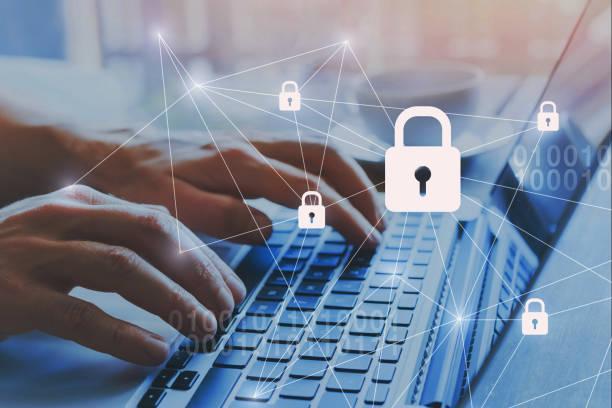Ransomware Attacks Affect More Than Just Your Wallet
Nowadays, ransomware assaults are the biggest cybersecurity threat to date, affecting major businesses all over the globe. It is apparent that no one is immune to these attacks and cybercriminals will target any customer or business from all sectors of society. Because of this, organizations are striving to aggressively bolster their defenses and lessen the damage that is caused by ransomware and related extortion.

What is a Ransomware Attack?
Malicious software (malware), known as ransomware, threatens to publish or prevent access to data or a computer system, typically by encrypting it, unless the victim pays the attacker a ransom price. The ransom demand frequently includes a deadline. If the victim doesn’t make a timely payment, the data is permanently lost or the ransom price rises.
Additionally, attackers regularly develop new varieties of ransomware that employ a variety of attack vectors, including malvertising, ransomworms, and peer-to-peer file-sharing applications. Attacks using ransomware can be successful even if they are not sophisticated.
There is also ransomware-as-a-service, where crooks sell their virus to other online criminals, expanding the scope and frequency of ransomware. Authors of ransomware are free to recruit anyone, and both sides will share in the earnings.
What is Data Exfiltration?
Data theft is often referred to as data exfiltration. When a malware attack or unauthorized user infiltrates a network, they can access data and copy, transmit, or recover it. Data exfiltration’s main objective is to obtain as much information as covertly possible in order to have maximum leverage over the victim.
Data exfiltration is one of the most lucrative features of contemporary cyberattacks and gives attackers tremendous influence over victims of cyberattacks. Attackers are able to demand millions of dollars in ransom payments from target firms when they exfiltrate sensitive data, particularly consumer data. Attackers frequently make direct extortion threats to victims. Additionally, data exfiltration gives attackers the ability to use stolen information to launch subsequent attacks against both the initial victim and companies found in the stolen data collection.
Ransomware Attack Costs
A corporation can lose millions of dollars due to ransomware, including the ransom itself, missed income and productivity, compliance penalties, and losses resulting from lost intellectual property.
Ransomware will cost its victims around $265 billion (USD) annually by 2031, Cybersecurity Ventures predicts. Every 2 seconds, a new ransomware attack is launched, whether it be on consumers or businesses, as ransomware offenders improve their virus payloads and associated extortion schemes. The financial amount is predicated on damage expenses increasing by 30% annually over the next ten years.
The continual rise in ransomware attacks highlights persistent issues with security awareness training, a corporate competency that is predicted to grow to be worth $10 billion yearly within the next five years due to its importance.
Repercussions of Not Securing Sensitive Data
Sensitive information being stolen and held for ransom could lead to expensive legal action from customers and regulators.
Loss of sensitive data triggers penalties:
PHI, PCI, and PII Data: Personal health information (PHI related to HIPAA), financial information and Payment Card Industry (PCI), and Personally Identifiable Information can all carry significant regulatory and legal penalties (PII).
Loss of customer confidence resulting in a class action:
Class-action lawsuits & settlements: No industry is safe from a class-action lawsuit by disgruntled customers, but the majority of cases are resolved outside of court because businesses prefer to compensate hacking victims over engaging in costly and drawn-out legal disputes
Additional lawsuits for related attacks:
Changes in Lawsuits: Customers are suing for compensation for more reasons than merely lost data, such as the increased risk of credit card fraud or identity theft. Due to the rise in supply chain attacks, downstream businesses may also bring claims for damages related to loss of business continuity, incident response costs, and recovery costs.
Loss of intellectual property:
Foreign access to data: Unauthorized access to corporate data can be detrimental to the company whose data is accessed and advantageous to the rival who manages to gain access to the data without authorization. Unauthorized access to a competitor’s trade secrets and sensitive information (such as customer lists, pricing information, strategic plans, product designs, formulas, software, etc.) increases the chance of suffering financial losses and competitors obtaining ill-gotten data.
Ransomware Attacks Affect Reputation
An assault by ransomware can also harm a business’s reputation, costing clients and commercial possibilities. Because they are risk-averse, clients and suppliers will be reluctant to work with a company after a ransomware assault. To keep brand reputation intact, it is critical that companies be alerted as soon as a ransomware attack occurs so that they can launch a swift investigation. According to Crowdstrike research, mature organizations should have 10 minutes to look into an infiltration, when unfortunately, only 10% of businesses can reach this standard.
Ransomware Prevention
Portal26 is an award-winning data security platform that combines high-performance encryption-in-use with nine traditional data security techniques to substantially reduce the risk for ransomware and other data-focused attacks.
Portal26 recently conducted a State of Data Exfiltration & Extortion Report for 2022. The data shows that: while 75% of surveyed organizations deployed the full spectrum of tools covering prevention, detection, backup, recovery, and traditional encryption technologies, we still saw that a massive 70% were successfully breached. 80% of surveyed organizations had encryption at rest and in transit in place, and still, an enormous 68% lost data in clear text. Finally, when 70% of surveyed organizations had backup and recovery systems in place, 60% still ended up paying the ransom. These numbers highlight the big gap that still exists.
With attackers winning over 60% of the time, enterprises seeking to defend themselves from ransomware and extortion need to look beyond the current crop of prevention, detection, and backup solutions.
To combat ransomware and build toward ransomware immunity, check out Portal26’s offerings:
![]() Portal26 FileShare Security: Portal26 provides always-on encryption for file servers and other file-sharing platforms. Portal26 ensures that all files are always secured with NIST FIPS 140-2 validated strong encryption and unencrypted data is not available directly from the file share regardless of privilege. Since data is encrypted before it lands, ransomware actors cannot access unencrypted data even if they are inside the firewall and moving laterally without restriction. The data release is strongly governed via policy, can be released in a number of private formats, can be rate limited, and can be plugged into other access controls as required.
Portal26 FileShare Security: Portal26 provides always-on encryption for file servers and other file-sharing platforms. Portal26 ensures that all files are always secured with NIST FIPS 140-2 validated strong encryption and unencrypted data is not available directly from the file share regardless of privilege. Since data is encrypted before it lands, ransomware actors cannot access unencrypted data even if they are inside the firewall and moving laterally without restriction. The data release is strongly governed via policy, can be released in a number of private formats, can be rate limited, and can be plugged into other access controls as required.
![]() Portal26 Object Store Proxy: Portal26 Proxy provides transparent application-level NIST FIPS 140-2 validated encryption for cloud object stores. Whereas native cloud platform encryption secures data from compromise on the cloud provider, encrypting with Portal26 ensures ransomware protection and complete data security if the enterprise themselves are victims of an attack. Portal26 supports privacy-enabled data release in nine secure and private formats as well as full-featured searches on encrypted data. The Portal26 Proxy bolts onto the non-extensible legacy, or fragile, systems and transparently directs sensitive data in and out according to security or privacy policy. Portal26 Proxy is available for both AWS and Azure environments.
Portal26 Object Store Proxy: Portal26 Proxy provides transparent application-level NIST FIPS 140-2 validated encryption for cloud object stores. Whereas native cloud platform encryption secures data from compromise on the cloud provider, encrypting with Portal26 ensures ransomware protection and complete data security if the enterprise themselves are victims of an attack. Portal26 supports privacy-enabled data release in nine secure and private formats as well as full-featured searches on encrypted data. The Portal26 Proxy bolts onto the non-extensible legacy, or fragile, systems and transparently directs sensitive data in and out according to security or privacy policy. Portal26 Proxy is available for both AWS and Azure environments.
![]() Portal26 Vault: Portal26 Vault is a stand-alone data vault that can store and analyze structured and unstructured data, all while retaining strong NIST FIPS140-2 encryption without decrypting data at any time, including in memory or under the hood. With backup in place and strong encryption-in-use, Portal26 Vault is immune to cyberattacks, including ransomware. The Portal26 Vault also wins against traditional tokenization solutions by providing all the capabilities of tokenization with the added benefit of rich data usability. If used for tokenization, the Portal26 Vault can secure any type of existing data store or applications and build ground-up systems natively immune to data compromise. Data can be released from the Vault in nine different privacy-preserving formats to protect downstream systems from ransomware attacks and insider threats.
Portal26 Vault: Portal26 Vault is a stand-alone data vault that can store and analyze structured and unstructured data, all while retaining strong NIST FIPS140-2 encryption without decrypting data at any time, including in memory or under the hood. With backup in place and strong encryption-in-use, Portal26 Vault is immune to cyberattacks, including ransomware. The Portal26 Vault also wins against traditional tokenization solutions by providing all the capabilities of tokenization with the added benefit of rich data usability. If used for tokenization, the Portal26 Vault can secure any type of existing data store or applications and build ground-up systems natively immune to data compromise. Data can be released from the Vault in nine different privacy-preserving formats to protect downstream systems from ransomware attacks and insider threats.
![]() Portal26 Plugin: Portal26 Plugin protects sensitive data inside major enterprise search platforms without limiting full-featured search capabilities or deprecating search performance. Portal26 Plugin is available for all versions of Elasticsearch, OpenDistro, and OpenSearch on AWS/Azure. The Portal26 plugin can run on enormous big-data clusters within hours. Data inside the Portal26-protected platforms cannot be exfiltrated in clear text, even if the cluster is compromised during a ransomware attack, insider attack, or left exposed by accident.
Portal26 Plugin: Portal26 Plugin protects sensitive data inside major enterprise search platforms without limiting full-featured search capabilities or deprecating search performance. Portal26 Plugin is available for all versions of Elasticsearch, OpenDistro, and OpenSearch on AWS/Azure. The Portal26 plugin can run on enormous big-data clusters within hours. Data inside the Portal26-protected platforms cannot be exfiltrated in clear text, even if the cluster is compromised during a ransomware attack, insider attack, or left exposed by accident.
![]() Portal26 API/Translation service: Portal26’s API service can stand alone or integrate with any of the other Portal26 products to yield a high-performing data translation service. The Portal26 Translation Service can be used independently to make existing applications resistant to ransomware and other data-related cyberattacks. It can also ensure that protected data leaving other Portal26 products can be easily translated into clear text or other private formats by downstream applications. From the nine secure and private formats (including searchable encryption) and types of data, including keywords, text, numbers, dates, IP Addresses, Binary and PII-specific data types, the Portal26 API enables other Portal26-protected systems to be completely locked down, aligned with the Zero Trust Data security standard.
Portal26 API/Translation service: Portal26’s API service can stand alone or integrate with any of the other Portal26 products to yield a high-performing data translation service. The Portal26 Translation Service can be used independently to make existing applications resistant to ransomware and other data-related cyberattacks. It can also ensure that protected data leaving other Portal26 products can be easily translated into clear text or other private formats by downstream applications. From the nine secure and private formats (including searchable encryption) and types of data, including keywords, text, numbers, dates, IP Addresses, Binary and PII-specific data types, the Portal26 API enables other Portal26-protected systems to be completely locked down, aligned with the Zero Trust Data security standard.
 Portal26 Studio: Finally, the Studio provides an interface for managing other Portal26 products. It provides dashboards, reports, and granular compliance certifications in the event of a successful attack. Uniquely, the Portal26 Studio gives CISOs critical post-attack documentation as they can use Portal26 Studio reports as auditable evidence that their data retained encryption throughout the attack.
Portal26 Studio: Finally, the Studio provides an interface for managing other Portal26 products. It provides dashboards, reports, and granular compliance certifications in the event of a successful attack. Uniquely, the Portal26 Studio gives CISOs critical post-attack documentation as they can use Portal26 Studio reports as auditable evidence that their data retained encryption throughout the attack.
Portal26’s Data Exfiltration Prevention
To get a demo of Portal26’s data exfiltration prevention capabilities, schedule a demo today!
Related Resources

Black Swan in Data Security
Black Swan In Data Security A few years ago, I read the book Black Swan by Nassim Nicholas Taleb. The primary thesis is that we

Normalizing Outliers in Cybersecurity – Ransomware Edition
Ransomware Defense: Normalizing Outliers in Cybersecurity – Ransomware Edition Last week, I wrote an article titled “Black Swan in Data Security”. The primary point I

Data Exfiltration And How To Protect Your Data
Essential Data Protection Strategies: How to protect against Data Exfiltration Portal26’s ‘State of Data Exfiltration & Extortion Report’ shows that organizations may be less protected
